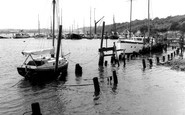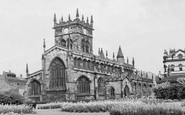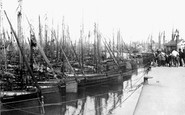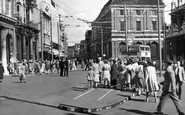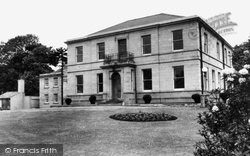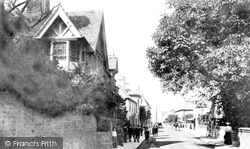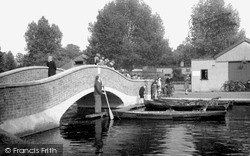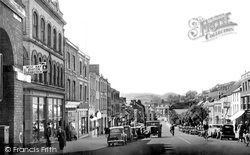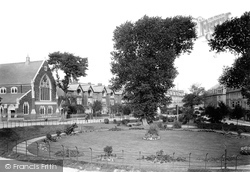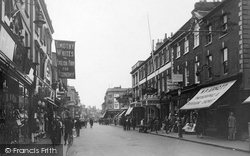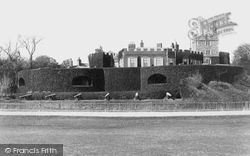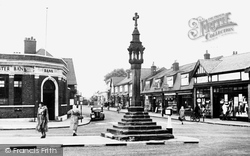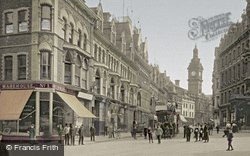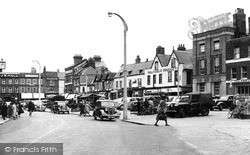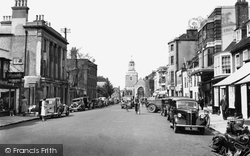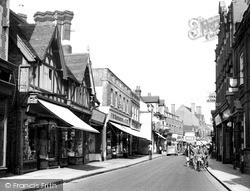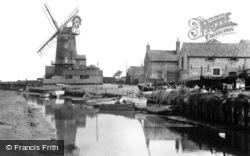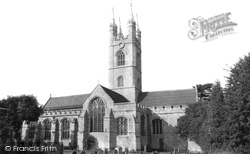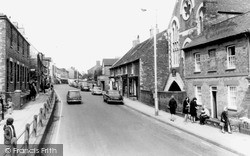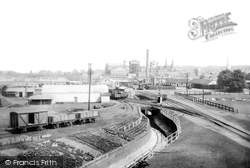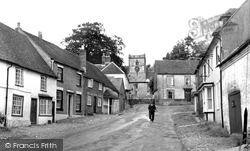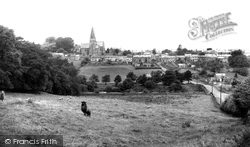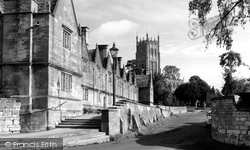Places
26 places found.
Those places high-lighted have photos. All locations may have maps, books and memories.
- Town End, Derbyshire
- Town End, Buckinghamshire
- Town's End, Somerset
- Towns End, Dorset
- Town End, Merseyside
- Town End, Cambridgeshire
- Town's End, Buckinghamshire
- West End Town, Northumberland
- Bolton Town End, Lancashire
- Kearby Town End, Yorkshire
- Town End, Cumbria (near Grange-Over-Sands)
- Town End, Cumbria (near Bowness-On-Windermere)
- Town End, Yorkshire (near Huddersfield)
- Town End, Yorkshire (near Wilberfoss)
- Town End, Cumbria (near Appleby-in-Westmorland)
- Town's End, Dorset (near Melbury Osmond)
- Town's End, Dorset (near Swanage)
- Town End, Cumbria (near Ambleside)
- Town End, Cumbria (near Lakeside)
- Town End, Cumbria (near Kirkby Lonsdale)
- Town End, Cumbria (near Ambleside)
- Town's End, Dorset (near Bere Regis)
- West-end Town, South Glamorgan
- Townend, Derbyshire
- Townend, Strathclyde (near Dumbarton)
- Townend, Staffordshire (near Stone)
Photos
26 photos found. Showing results 3,381 to 26.
Maps
195 maps found.
Books
160 books found. Showing results 4,057 to 4,080.
Memories
3,719 memories found. Showing results 1,691 to 1,700.
Cody Road Prefabs
I used to live in No 55 Cody Road in the prefabs, from 1948 until 1959. I returned last year (2009), I found the road our prefab was on the corner of Cody Road and Brookhouse Road. I remember we had a large area of grass in front ...Read more
A memory of Cove in 1953 by
The River At Hoo
In the late 1950s my parents had a small boat on the river here. My dad built it in the side garden of our house on the outskirts of the village. He painted it blue and named it 'Jeannie', after my mother. It had a small outboard ...Read more
A memory of Hoo in 1958 by
Nothe Cheam In The Thirties
My parents moved to North Cheam from Balham in, I think. 1936. My father lived there until his death in 1970. After I left school in 1949, I used to travel up to London, via Morden underground station which was a ...Read more
A memory of North Cheam in 1930 by
Fraser Families In Muirtown Circa 1720 1810
In 1803, a group from the Muirtown area, left Scotland and came to America. Included were - (3)Simon & Elizabeth Fraser & 2 of their children Donald & Mary; AND cousin (2.3.2)John ...Read more
A memory of Muirtown by
Killiechonich
I was born at Killiechonich and lived there until I was 11. Remember walking down through the wood to Johnny and Morag McColl (a brother and sister who lived at the croft - they were from Skye). Then we would walk ...Read more
A memory of Kilmore in 1960 by
Fylingdales Construction
I worked as an electrician on the installation of all the electrical services in conjunction with RCA and others. I lived in a residential caravan at the Flask Inn, on the coast road, with my wife and at that time ...Read more
A memory of Fylingdales Moor in 1962 by
Wigan In 1950 To 1964
I was born in Queen Street, off Wallgate Street, in 1949 and lived in Queen Street till late 1959. I remember going to see Wigan rugby play Workington at Wembley 1958 and in 1959 beating Hull. I attended the Wesleyan Methodist ...Read more
A memory of Wigan in 1950 by
A Family Visit To The National Marine Aquarium
This view is close to the Fisheries Quay and the area now known as Sutton Harbour. I visited with my family on a cold wet Easter Saturday to give my granddaughter Anna a day long tour of the ...Read more
A memory of Plymouth in 2010 by
How Well I Remember The Buses On The Cornhill
I was born in 1956 and used to go to the town with my mum on the buses to town. She called them trolley buses but I can remember them stopping on the Cornhill ready to take us home again before they ...Read more
A memory of Ipswich in 1960 by
Hitler Gives Us Another Weeks Holiday
We'd had our usual five weeks school holidays when Hitler's Luffwaffe gave us another few days off. His bombers scampering back to the continent, after presumably bombing Midlands cities, jettisoned another, ...Read more
A memory of Flitwick in 1943 by
Captions
5,111 captions found. Showing results 4,057 to 4,080.
'Chepe' and 'stowe' combine to mean 'market place', which indicates the early origins of this town.
After a succession of owners and tenants, the estate was sold to Featherstone Council in 1930 for £3,600, after which it was used as the Town Hall and a public park.
Broadwater is the old parish on which Worthing was built; its church is the mother church of the town. It was an old market under the Camois family, and is now a district of Worthing.
Lack of major industrial development in Tewkesbury meant that the town retained much of its 17th- and 18th-century character and did not experience much of an explosion in its population.
South-east of the town, along the valley of the River Ise and west of Barton Seagrave village, is The Wicksteed Park with the river dammed to form a large lake as the centrepiece.
A remarkably foreshortened shot, westwards down West Street, with the 1785-built arch (far left) being the north- west corner of the Town Hall.
Looking from the Hall (or the Palace Avenue Theatre) through the gardens, we can see Norton's and Welton's shoe shops.
The town achieved some status as a holiday resort, particularly as a touring centre and as a base for leisure yachting.
Along with Deal and Sandown, Walmer was one of the 'Three Castles which keep the Downs'.
In contrast with the western side of the Wirral Peninsula, the towns and villages of the east have become one continuous conurbation because of their proximity to the River Mersey and Liverpool.
This ancient town crowns the steep hill above the valley of the River Kensey. Here we see the broad market place, with its pleasing facades of 17th- and 18th-century slate-roofed buildings.
The Town Hall tower (centre right), designed by T M Lockwood and E A Landsdowne, was opened in 1885. It has since been demolished to make way for the British Home Stores.
The north side of the Market Place was the drinking heart of Wisbech, whose taste for alcohol saw one hundred inns, taverns and pubs recorded around the town.
An important sailing centre, Lymington was originally a Saxon port, and there was shipbuilding here between the Norman era and the 18th century.
Fletchers and Woolworth's (left) have been built on the site of the Queen's Arms public house and the old Fotherley Almshouses, which had been erected in 1682 to provide for five poor widows of the town
This picturesque flint village was once the most significant of the Glaven estuary ports, and its old Custom House bears testimony to its prestigious past.
Here we see the Square outside the old town hall and part of Market Street. We can see the bus shelters on the left.
Said to be one of the finest town churches in Kent, the parish church is built of Kentish ragstone and has an impressive interior.
This is not one of Northamptonshire's most attractive boot and shoe towns - and what old buildings remain are now isolated by new buildings, some visible in this view.
In 1799 Edward Ind bought the Star Inn which had a reputation for brewing fine ale. He developed a prosperous brewing business and in 1845 Octavius and Edward Coope joined the firm.
Storrington never appears to have been very large, and far from being a centre of wealth, was probably no more prosperous than its neighbouring downland villages.
The Bishop of Winchester granted a weekly market here in the 13th century, and looking at this photograph of one of the village streets, little has changed since the mid 1950s.
This little town, on the Yorkshire/Lancashire border, has been famed for its potteries since Roman times. Coal mining and quarrying also sustained the population.
'Chipping' means 'market' in Old English, and it was as a market centre for the woollen industry that Chipping Campden rose to affluence.
Places (26)
Photos (26)
Memories (3719)
Books (160)
Maps (195)

